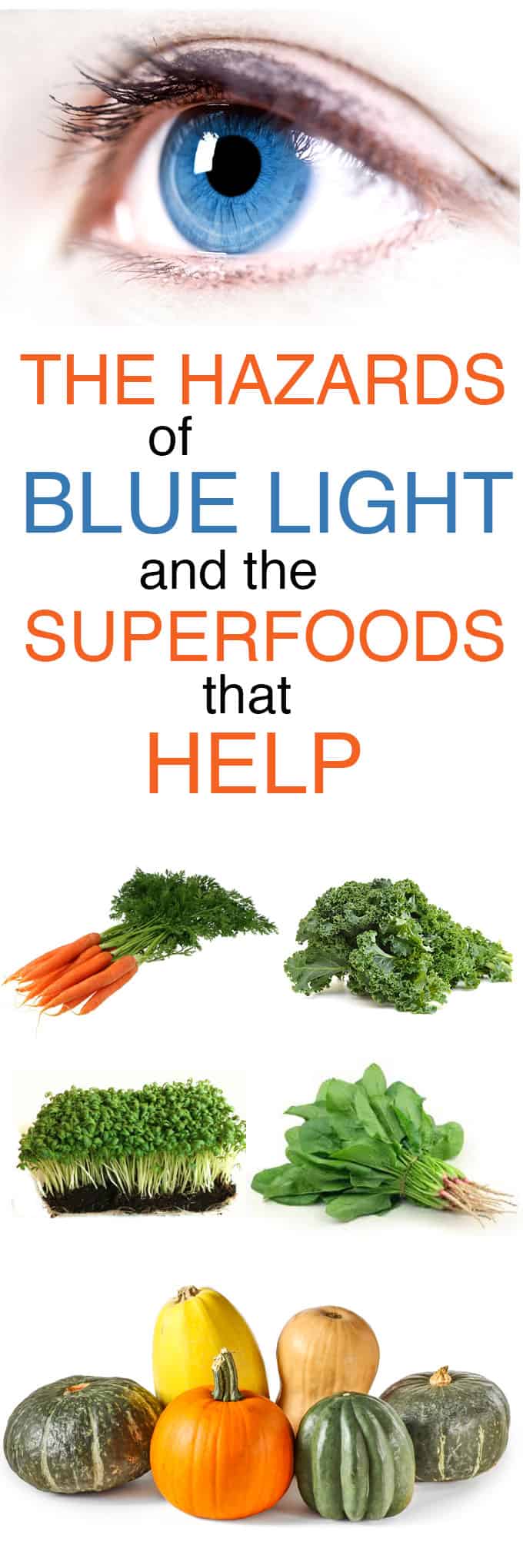
We all know that a healthy diet can be hugely beneficial to our health, but did you know those all-important superfoods can help to slow down aging of the eyes and actually improve your eyesight?
I don’t want to bury you in scientific research, but a recent paper has examined the risks of our ever-increasing exposure to blue light, and found that our eyes are struggling to cope. The problem is being caused by just how much of our lives we spend glued to screens. If we’re not binge-watching the latest box set, we’re busy shopping online or updating our social media profiles on our phones. And unfortunately, all that screen gazing comes at a cost to our peepers.
What is blue light?
Blue light is part of the visible light spectrum and is produced by the sun, artificial light but also digital displays, such as televisions, personal computers and smart phones. The trouble is that blue light has a higher frequency than red light, which means it vibrates with more energy and reaches deeper into the eye. Overexposure to blue light can cause damage to the retina and ultimately lead to age-related macular degeneration.
Age-related what?
Age-related macular degeneration (AMD) is a condition one-in-ten people over the age of 65 currently suffer from, although this is likely to increase as the screen addicted generation reach retirement age. AMD is caused by the degeneration of the macula, which contains a yellow pigment that filters out blue light. Overexposure to blue light damages the macula and causes AMD, which has become the leading cause of blindness in the west.
I can see clearly now…
If you can’t see your digital habits changing any time soon, the good news is that research from Harvard University has shown there are some foods you can eat to boost your eye health. The study, which followed 102,046 participants over the course of 20 years, found those who ate plenty of foods rich in lutein and zeaxanthin were 40 percent less likely to suffer from advanced age-related macular degeneration.
Image courtesy of Focus Clinics
Ten lutein and zeaxanthin-rich foods
These are the ten superfoods with the greatest lutien and zeaxanthin content per 100g:
- Kale (cooked from raw) 18.3mg
- Cress (raw) 12.5mg
- Spinach (raw) 12.2mg
- Spinach (cooked from raw) 11.3mg
- Peas (cooked from raw) 2.6mg
- Squash (cooked from raw) 2.2mg
- Green lettuce (raw) 1.7mg
- Brussel sprouts (cooked from raw) 1.3mg
- Asparagus (cooked from raw) 0.7mg
- Carrots (cooked from raw) 0.7mg
So, if you overindulge when it comes to your digital intake, kale, cress and spinach are three go-to greens to give your eyesight the very best chance of survival.
Thanks Alex Richardson for the blog contribution!





Leave a comment